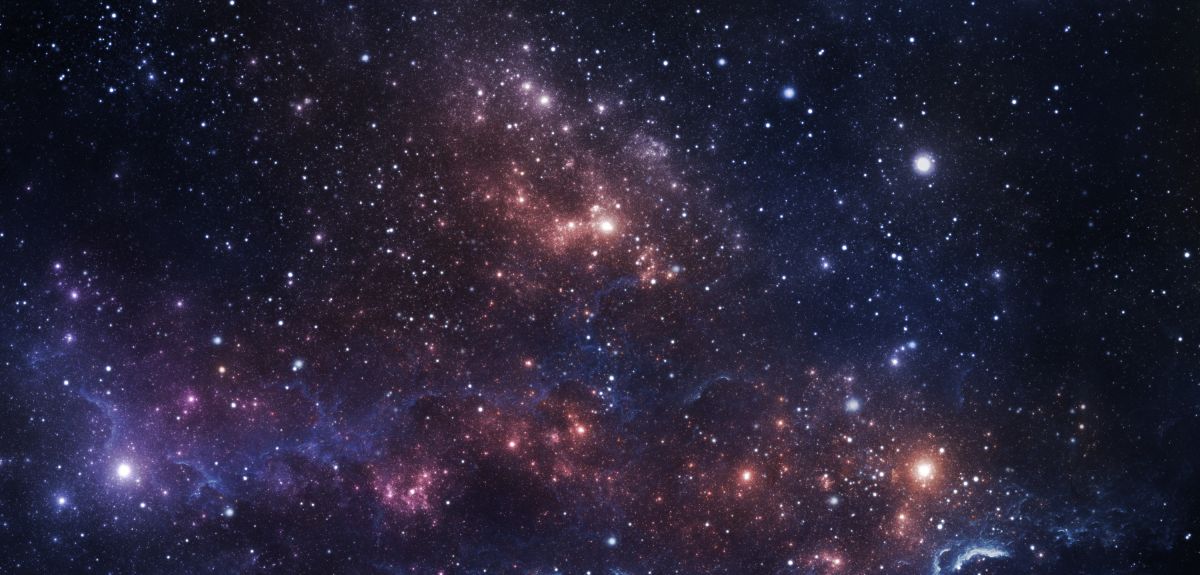
Image credit: Shutterstock
Do we need a new theory of gravity?
In a guest post for Science Blog, Dr Tessa Baker from the Department of Physics writes about her work on alternative gravity. Dr Baker is one of the new generation of physicists trying to explain 'dark energy', and she recently received a 'Women of the Future' award.
In the late 1990s physicists discovered, to their consternation, that the expansion of the universe is not slowing but accelerating. Nothing in the 'standard model of cosmology' could account for this, and so a new term was invented to describe the unknown force driving the acceleration: dark energy.
We really have no idea what 'dark energy' is, but if it exists it has to account for about 70% of the energy in the whole universe. It's a very big ask to add that kind of extra component to the standard cosmological model. So the other explanation is that we are using the wrong equations – the wrong theories of gravity – to describe the expansion rate of the universe. Perhaps if it was described by different equations, you would not need to add in this huge amount of extra energy.
Alternative gravity is an answer to the dark energy problem. Einstein's theory of general relativity is our best description of gravity so far, and it's been very well tested on small scales; on the Earth and in the solar system we see absolutely no deviation from it. It's really when we move up to the very large distance scales involved in cosmology that we seem to need to modify things. This involves a change in length-scale of about 16 orders of magnitude (ten thousand trillion times bigger). It would be astounding if one theory did cover that whole range of scales, and that's why changing the theory of gravity is not an insane idea.
One of the real challenges in building theories of gravity is that you need to make sure that your theory makes sense at the very large cosmological scales, without predicting ludicrous things for the solar system, such as the moon spiralling into the earth. I don't think enough of that kind of synoptic analysis gets done. Cosmologists tend to focus on the cosmological properties and they don't always check: does my theory even allow stable stars and black holes to exist? Because if it doesn't, then you need to throw it out straight away.
Over the past decade hundreds of researchers have come up with all sorts of ways to change gravity. Part of the problem now is that there are so many different theories that if you were to test each one individually it would take forever. I've done a lot of work on trying to come up with unified descriptions of these theories. If you can map them all onto a single mathematical formalism, all you have to do is test that one thing and you know what it means for all the different theories.
In doing this mapping process we've discovered that a lot of the theories look very different to start with, but at the mathematical level they're moving along the same lines. It suggests to me that people are stuck in one way of thinking at the moment when they build these gravity theories, and that there's still room to do something completely different.
More recently I've moved on to developing ways to actually test the mathematics – to constrain it with data. For example, we can use gravitational lensing. If you have a massive object like a galaxy cluster, the light from objects behind it is bent by the gravity of the cluster. If you change your theory of gravity, you change the amount of bending that occurs. Basically we throw every piece of data we can get our hands on into constraining these frameworks and testing what works.
At this precise moment the data we have is not quite good enough to distinguish between all the different gravity models. So we are doing a lot of forecasting for the next generation of astrophysics experiments to say what kind of capability will be useful in terms of testing theories of gravity. There's still time in some of these new projects to change the design, and I hope to see some of these experiments come on line.
I am very grateful to my former supervisor Pedro Ferreira, who nominated me for the 'Women of the Future' award, and to the Women of the Future scheme. There are two sides to this award; one is the scientific work itself, and the other is the female leadership aspect. In the interview for the award we had quite an extensive discussion about the role of women in science, and what challenges they face. It's a global field-wide issue, and it is changing; it's just going to take time. And in fact Oxford Astrophysics is brilliant for women: Jocelyn Bell Burnell, Katherine Blundell, Joanna Dunkley – they're all really strong female role models.
This blog post first appeared on the Mathematical, Physical and Life Sciences Division website.